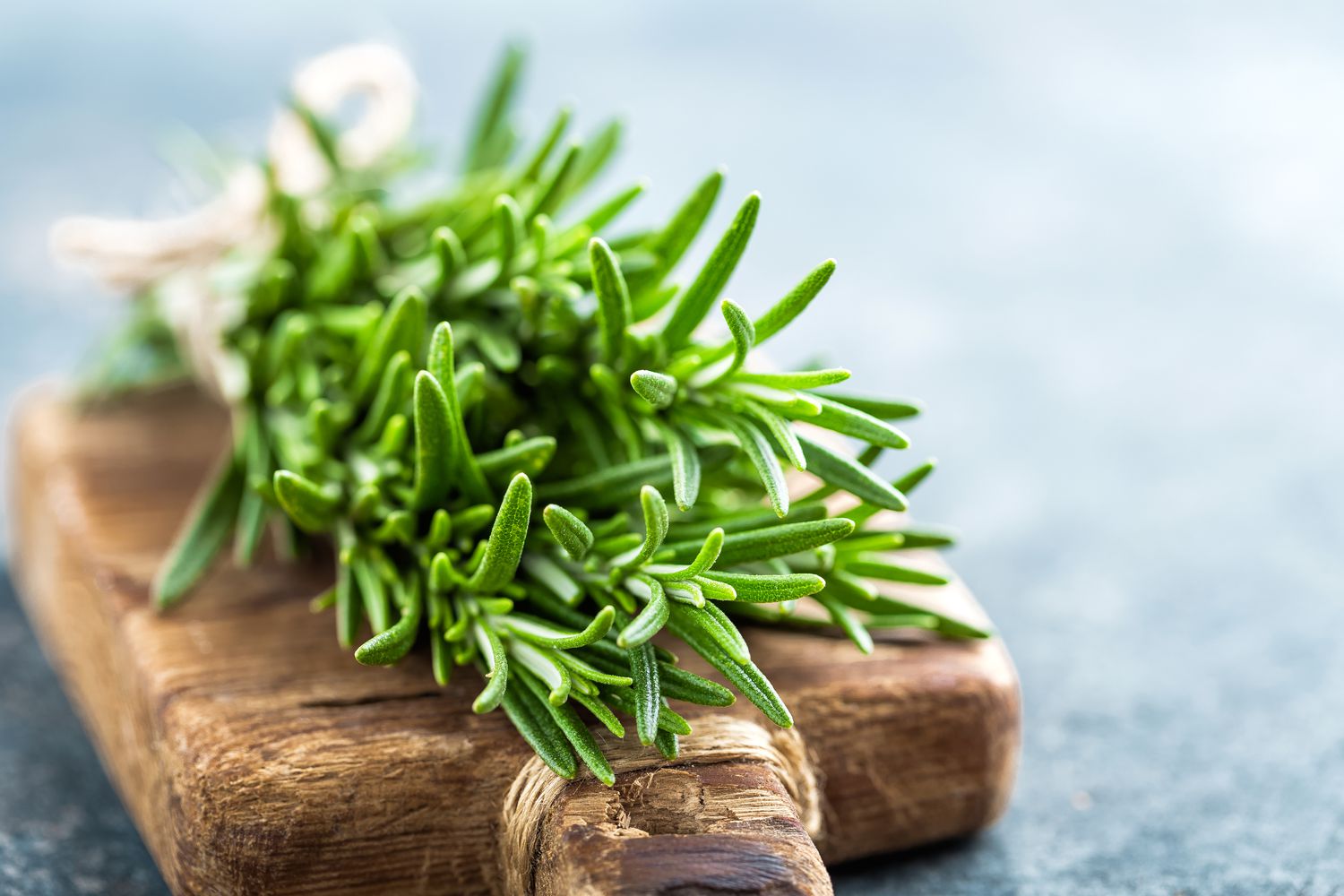Home>Gardening Techniques>DIY Projects>How To Freeze Fresh Rosemary


DIY Projects
How To Freeze Fresh Rosemary
Published: January 28, 2024
Learn how to freeze fresh rosemary with this easy DIY project. Extend the shelf life of your herbs and always have rosemary on hand for cooking.
(Many of the links in this article redirect to a specific reviewed product. Your purchase of these products through affiliate links helps to generate commission for Chicagolandgardening.com, at no extra cost. Learn more)
Table of Contents
Introduction
Welcome to the world of DIY projects! Whether you’re a seasoned DIY enthusiast or just starting out, there’s no denying the satisfaction and fulfillment that comes from creating something with your own two hands. From woodworking and home improvement to crafting and gardening, the possibilities are endless when it comes to DIY projects.
One popular aspect of DIY projects that often gets overlooked is the use of fresh herbs. Fresh herbs not only add a burst of flavor to your culinary creations but also bring a touch of nature into your home. One such herb that is beloved by many home cooks and gardeners is rosemary.
Rosemary, with its distinct aroma and versatile flavor, is a staple in Mediterranean cuisine. But what do you do when you have an abundance of fresh rosemary and don’t want it to go to waste? Freezing fresh rosemary is a fantastic way to preserve its flavor and fragrance for future use.
In this article, we will explore the benefits of freezing fresh rosemary, the necessary preparations before freezing, and two methods for freezing rosemary. We’ll also discuss the proper storage techniques for frozen rosemary and provide some helpful tips for using it in your culinary adventures. So grab your pruning shears and let’s dive into the world of freezing fresh rosemary!
Why Freeze Fresh Rosemary?
Before we jump into the different methods of freezing fresh rosemary, you might be wondering why you should even bother freezing it in the first place. Well, there are several reasons why freezing fresh rosemary is a great idea:
- Extended Shelf Life: Fresh herbs like rosemary have a limited shelf life. By freezing them, you can extend their usability for several months, allowing you to enjoy the delicious flavor of rosemary all year round.
- Convenience: Having frozen rosemary on hand means you can add a touch of freshness to your dishes whenever you want, without having to worry about the herb going bad or running to the store to buy more.
- Preserved Flavor and Aroma: Freezing rosemary at its freshest ensures that its essential oils, which contribute to its distinct flavor and aroma, are preserved. This means that when you use frozen rosemary, you’ll still get that wonderful taste and fragrance in your dishes.
- Versatility: Frozen rosemary can be used in a variety of recipes, from soups and stews to marinades and dressings. It’s a versatile herb that can enhance the flavor of both savory and sweet dishes.
- Cost Effective: If you have a rosemary plant in your garden or a generous friend who supplies you with fresh rosemary, freezing it allows you to make the most of your abundance without letting any go to waste.
Now that we’ve established the benefits of freezing fresh rosemary, let’s move on to the preparations you need to make before freezing.
Preparation Before Freezing
Before you can freeze fresh rosemary, there are a few key preparations you’ll need to make to ensure the best results:
- Harvesting: Choose a time in the morning when the rosemary leaves are at their freshest and most flavorful. Use a pair of clean gardening shears or scissors to cut sprigs from the plant. Aim for sprigs that are around 4-6 inches long.
- Washing and Drying: Rinse the rosemary sprigs under cool water to remove any dirt or debris. Gently pat them dry using a clean kitchen towel or paper towel. It’s important to make sure the sprigs are completely dry to prevent ice crystals from forming during the freezing process.
- Deleafing: If desired, you can remove the rosemary leaves from the stems before freezing. This can make it more convenient to use the rosemary later on, as you won’t have to worry about removing any woody stems. However, leaving the leaves on the stems can also help to preserve the flavor and aroma of the herb.
- Proper Packaging: Choose your preferred method of packaging for freezing the rosemary. This can be freezer-safe bags, airtight containers, or even ice cube trays if you plan on freezing chopped rosemary. Make sure the packaging you choose is suitable for the freezer to prevent freezer burn and maintain the freshness of the herb.
By taking the time to properly prepare the fresh rosemary before freezing, you’ll ensure that you’re preserving its flavor and quality. Now that we’re all prepared, let’s move on to the different methods of freezing fresh rosemary!
Method 1: Freezing Fresh Rosemary Sprigs
One of the easiest and most common ways to freeze fresh rosemary is by freezing the sprigs whole. This method allows you to preserve the rosemary in its natural state and retain its aromatic oils. Follow these simple steps:
- Prepare the Sprigs: Trim off any discolored or wilted leaves from the rosemary sprigs. Leave the rest of the leaves intact on the stems as they contain the most flavor.
- Flash Freeze: Lay the sprigs in a single layer on a baking sheet lined with parchment paper or a silicone mat. Make sure the sprigs do not touch each other. Place the baking sheet in the freezer and let the sprigs freeze for a few hours or until they are firm.
- Packaging: Once the sprigs are frozen, transfer them into freezer-safe bags or airtight containers. Label them with the date to keep track of their freshness.
- Return to the Freezer: Place the packaged rosemary sprigs back into the freezer. They can be stored for up to six months.
By freezing rosemary sprigs using this method, you’ll have the flexibility to use whole sprigs whenever you need them. Whether it’s for roasting chicken, adding to soups, or infusing oils, frozen rosemary sprigs will bring a burst of flavor to your culinary creations. Now, let’s explore another method for freezing fresh rosemary.
Method 2: Freezing Chopped Fresh Rosemary
If you prefer to have your rosemary conveniently chopped and ready to use, freezing it in this form is the way to go. Follow these steps to freeze chopped fresh rosemary:
- Prepare the Rosemary: Remove the leaves from the rosemary stems and discard the woody stems. Finely chop the rosemary leaves to your desired consistency.
- Portion the Chopped Rosemary: Measure out the chopped rosemary into individual portions based on how you plan to use it later. You can measure it by teaspoons or tablespoons, or even freeze it in ice cube trays.
- Package and Freeze: Place the measured portions of chopped rosemary into freezer-safe bags or airtight containers. Make sure to squeeze out any excess air before sealing. If using ice cube trays, divide the chopped rosemary evenly into the compartments and lightly press it down. Cover the tray with plastic wrap or foil before placing it in the freezer.
- Store and Label: Label the packaging with the date and portion size for easy reference. Place the packaged chopped rosemary in the freezer for long-term storage.
Freezing chopped rosemary not only saves you time in the kitchen but also allows you to easily add small amounts of rosemary to your dishes. Whether it’s adding a sprinkle to a pasta dish or seasoning roasted vegetables, having frozen, chopped rosemary on hand adds convenience without compromising on flavor. Now that you know how to freeze fresh rosemary sprigs and chopped rosemary, let’s move on to the proper storage techniques for frozen rosemary.
Storing Frozen Rosemary
Proper storage is essential for maintaining the quality and freshness of frozen rosemary. Follow these guidelines to ensure that your frozen rosemary stays in optimal condition:
- Freezer-Safe Packaging: Use freezer-safe bags, airtight containers, or vacuum-sealed bags to package the frozen rosemary. These prevent air and moisture from entering, which can lead to freezer burn and degradation of the herb’s quality.
- Labeling: Clearly label the packaging with the date of freezing. This helps you keep track of how long the rosemary has been in the freezer and ensures that you use the oldest items first.
- Proper Storage Temperature: Keep the frozen rosemary in the main section of the freezer at a temperature of 0°F (-18°C) or below. Avoid storing it in the freezer door, as this area experiences temperature fluctuations with frequent opening.
- Organized Storage: Arrange the frozen rosemary packages in a way that allows for easy access and prevents them from being crushed or damaged. Consider using a designated container or section in the freezer to keep them organized.
By following these storage practices, you can ensure that your frozen rosemary retains its quality and flavor for an extended period. Now that you have your frozen rosemary stored properly, let’s explore some tips for using it in your culinary endeavors.
Tips for Using Frozen Rosemary
Using frozen rosemary is a convenient way to add a burst of flavor to your dishes, and with a few tips, you can make the most out of your frozen herb. Consider the following tips:
- Measurements: Keep in mind that frozen rosemary may have a slightly stronger flavor than fresh rosemary. Adjust your measurements accordingly, especially if a recipe calls for fresh rosemary.
- Direct Use: Frozen rosemary can be used directly in recipes without thawing. Simply add the frozen sprigs or chopped rosemary to your dish while it’s cooking. The heat will quickly thaw and infuse the flavors into your dish.
- Crushing Method: If you prefer to use just the leaves, gently crush the frozen rosemary between your fingers or use a mortar and pestle to release the aroma and oils. This will help distribute the flavor more evenly in your dish.
- Infusion Techniques: Frozen rosemary can be infused into oils, vinegars, or even alcohol to create unique flavors. Simply add a few frozen rosemary sprigs to your chosen base and let it infuse for a few weeks. The longer it infuses, the stronger the flavor will be.
- Storage Duration: While frozen rosemary can be stored for several months, it’s best to use it within 6-12 months for optimal flavor. As time goes on, the flavor may weaken slightly, so it’s a good idea to rotate and use older packages before newer ones.
- Versatility: Frozen rosemary can be used in various dishes including soups, stews, sauces, marinades, roasted meats, and vegetables. Experiment and get creative with how you incorporate this aromatic herb into your recipes.
With these tips, you can confidently reach for your frozen rosemary whenever you need to add that delightful herbal aroma and flavor to your dishes. Rosemary is a versatile herb that can elevate the taste of a wide range of recipes.
Now that you’re equipped with the knowledge of freezing, storing, and using frozen rosemary, you can maximize the use of this wonderful herb all year round. Enjoy the convenience and vibrant flavor that frozen rosemary brings to your DIY culinary projects!
Conclusion
Congratulations! You’ve reached the end of our guide on how to freeze fresh rosemary. By utilizing the methods presented in this article, you can easily preserve the flavor and aroma of this versatile herb for future use. Freezing fresh rosemary not only extends its shelf life but also ensures that you have a readily available supply of this culinary treasure at your fingertips.
We discussed two common methods for freezing rosemary: freezing fresh sprigs and freezing chopped rosemary. Both methods have their advantages, and the choice ultimately depends on your preferences and how you plan to use the herb in your cooking.
Remember, proper preparation and packaging are key to maintaining the freshness and quality of frozen rosemary. Be sure to label and organize your frozen rosemary packages to make it easier to locate them in the freezer.
Once you have your frozen rosemary ready to go, use it in your favorite recipes, knowing that the flavor and aroma will still shine through. Whether you’re adding a sprig to a simmering soup or crumbling some chopped rosemary onto roasted vegetables, the taste of frozen rosemary will elevate your dishes to new heights.
So, why let your fresh rosemary go to waste when you can freeze it and enjoy its delightful flavor all year round? Start incorporating frozen rosemary into your DIY culinary projects and discover the wonders it can bring to your dishes.
Thank you for joining us on this freezing adventure. We hope this guide has been informative and helpful in your quest to preserve and savor fresh rosemary. Happy cooking!










